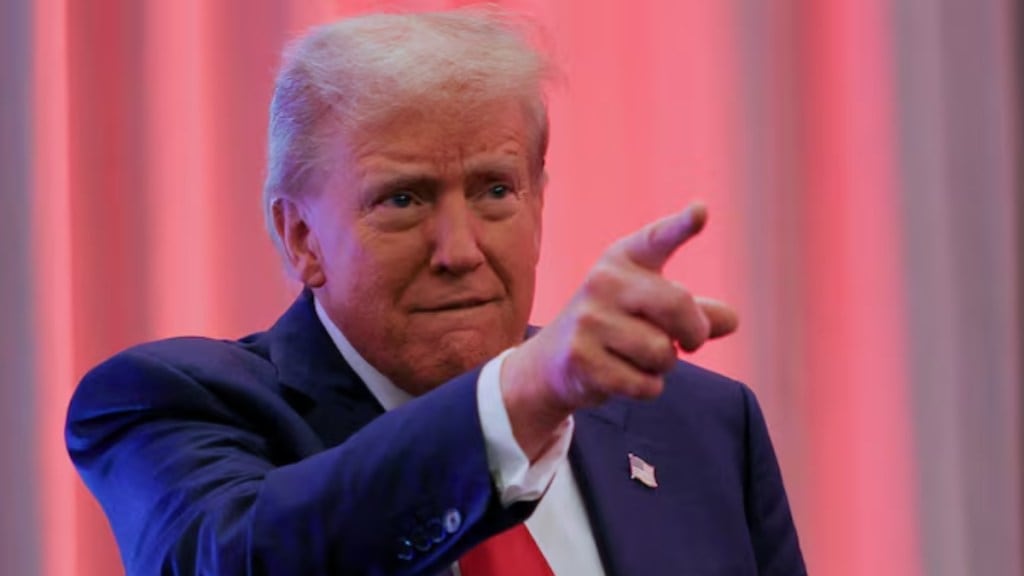The world is bracing up for the key reciprocal tariff announcements by US President Donald Trump. He has promised to “unveil a massive tariff plan on Liberation Day.” This is in addition to tariffs already imposed on aluminum, steel and autos, along with increased tariffs on all goods from China. The question that is relevant for us at the moment is how will it impact India and what are the options for us?
Can India reduce tariff to minimise impact?
While India could be among the worst hit nations as per broad reciprocal differentials, it needs to be also taken into consideration that some key susceptible sectors (Auto, Pharma, Electronics) are far better placed than feared. However, there are some like apparel and Gems/Jewellery are the most exposed.
Gaura SenGupta, chief economist at IDFC First Bank explained that increasing crude imports could offer some breathing space to India , “Tariff differentials is maximum on agriculture products . As per our calculation tariff differentials on agriculture products is 55.6%. It’s likely that India reduces tariffs on this segment which accounts for 4.4% share in total imports from the US. Other segments where tariffs could be reduced are pharma, stones and precious stones, electrical machinery, transport vehicles. India could offer to increase crude oil imports from US which accounts for 31% share in overall imports from US.”
Garima Kapoor, Economist and Executive Vice President, Elara Capital added that, “India’s immediate option would be to allow market access to American goods and negotiate trade deal. Eventually reducing tariffs and allowing the economy to open up is going to be beneficial for India in mid to long-term.”
India may argue for broad country-level tariff
Many industry observers believe that the Trump administration has been using tariff threats largely as a tool to extract concessions from affected countries but “simply accepting these concessions is not the only option for India.” added economists at Emkay Global.
According to Manoranjan Sharma, Chief Economist, Infomerics Ratings, “While “no trade is free”, as the globally acclaimed Harvard economist Dani Rodrik stressed, it must be realized that one size does not fit all. Unlike the US, India’s high tariffs are WTO (World Trade Organization) compliant. Given India’s wide tariff differential with the US, such tariffs are estimated to lead to a humongous $7 billion annual loss (0.18% GDP) in exports to the US (at 10% broad tariffs), with this rising to $31 billion at 25% tariffs. Given the maze of procedural and other difficulties involved in sector/commodity-level tariffs, a broad country-level tariff by the US is plausible.”
Just to remind our readers, during the inception of the WTO in 1995, developed nations agreed to let developing countries retain higher tariffs in exchange for introducing TRIPS (Intellectual Property rules), services trade liberalization, and agricultural trade rules.
Can Pharma be the prescription for relief to India
With almost 30 % of total global spending and about $ 5 trillion stock of foreign direct investment (FDI) (the largest globally), the USA remains the pivot of the global economy. According to economists at Emkay, “ India has some leverage over the US in certain areas of the trading relationship. While the aim should be to reduce disruption as much as possible by offering concessions in areas which will not hurt domestic production/capacity, there is one sector with enough influence/importance to be used as a bargaining chip. Pharma.”
According to the Emkay report, “pharma products were the fifth-highest imported commodities for the US in CY24 at $212bn (6.5% of total imports). India accounted for just 6% of this ($12.5bn). However, in terms of volume, India is the largest exporter of generic drugs in the world with 47% of US generic imports (by volume) arriving from India.”
US is an extremely important market for India as well with 37% of pharma exports going to the US. They highlighted that “The low value-high volume nature of India’s generic drug exports reflects the low cost of Indian pharma products, which makes it attractive for the US, and hence difficult to replace. Its importance as a supplier for the US pharma market (especially generics) is also seen by the fact that India accounted for over a third of all US FDA authorizations over the past few years.”
As a result, Emkay suggests that, “Given the importance of Indian generics for the US pharma industry, any tariff imposition would be detrimental for US consumers – a point which India needs to forcefully put forward to the US administration.”

